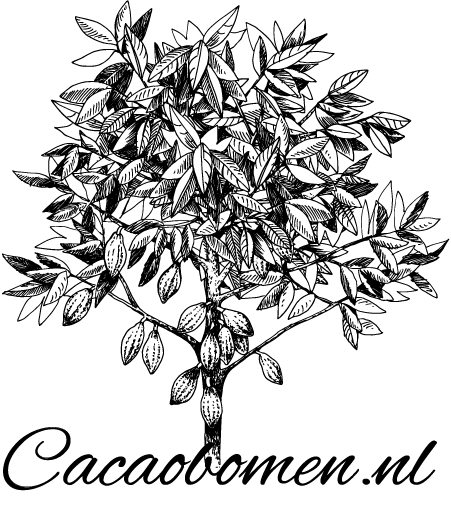History of cacao
The origin of the cocoa tree probably lies in the northern part of South America, including the Amazon region. In Central America, cacao beans were already being harvested before the Aztecs conquered the area of present-day Mexico City from the Toltecs around 1200. The history of cacaoin Europe only started in the 16th century. This happened after the Spanish conquistador Hernán Cortés landed in Mexico in 1521. To his surprise, the inhabitants saw him as the reincarnation of one of their gods. They showered him with gifts, including cocoa beans, which they used as a means of payment, among other things. Cortés then took the cocoa beans to Spain. The Aztecs also used the cocoa beans as a stimulant. They de-shelled them, crushed them and mixed the beans with other products to improve the taste.
Voyages of discovery
The period of the voyages of discovery did not only mean a fundamental change in the world view. It also led to a major change in diet, especially in European cities. Little-known products such as coffee, tea, maize, cocoa and tobacco now came to Europe. A lot of sugar was also shipped. This was because the sugar cane cultivation on the West Indies islands expanded enormously in a short time. The rising sugar imports into Europe led, among other things, to greater consumption of coffee and cocoa. The limited development of the technology hardly hindered coffee and tea consumption.
Cacao was different
It was different with cacao. This is probably why cocoa consumption in Europe, except in Spain, increased less rapidly than the consumption of coffee and tea. In addition, coffee and tea were easy to grow. Cacao drinks made with water and sugar were very popular in the 16th century, not only in the colonies, but also in Spain. In the rest of Europe these were only known later, in the Netherlands between 1610 and 1640.
Processing of cacao beans
The processing of the cocoa beans resembled the Mexican method of preparation. The cacao cores were finely ground on a millstone, which could be heated, with a hand roller. From time to time, European merchants brought grinding stones from Mexico. In Europe, Spain initially kept the cacao to itself. After that it came to the courts elsewhere in Europe and later to the well-to-do bourgeoisie, but not yet to the common people. Consumption lagged behind cacao bean production in Central America. The cacao trade therefore started to advertise in Europe. Around 1680, a remarkable distribution of books began in the Netherlands and France in which coffee, tea and cacao were promoted as food and stimulants. Around 1685 the Dutch physician Cornelis Decker, alias Bontekoe, wrote a book about coffee, tea and chocolate. He probably did this on behalf of Dutch merchants.
The technique of chocolate preparation
Gradually, the producers abandoned the habit of preparing cacao drinks exclusively with water and sugar. They used more milk, eggs and wine. Chocolate was also increasingly eaten in solid form. Around the 18th century, the technique of chocolate preparation improved. In addition to the grinding stone, the cacao processors now also used the mortar or mortar and the grinding kettle with an iron ball to grind the cacao nibs. At that time, it was recommended to defat the cocoa and to make chocolate from the partially defatted cocoa mass. The cocoa butter obtained by pressing the cacao mass was used in the manufacture of medicines. This period also marked the beginning of industrial chocolate preparation. The term 'factory' should not be taken too literally. These were almost always handicraft businesses with a few workers.
Powder chocolate
In the Netherlands Casparus van Houten founded the firm of Houten & Son in 1815. In 1828 Coenraad Johannes van Houten obtained C.I. van Houten & Son. ten years the monopoly for the manufacture of a 'powder chocolate' improved by him. He obtained this by pressing cacao mass. In 1818 there were twenty-seven chocolate factories in the Netherlands, fifteen of which were in Zeeland. Yet Dutch cacao bean imports in 1850 were only 225 tons and exports of cacao products about 22 tons. After the industrial revolution, the production of processing machines was taken seriously. Many rolling machines (SAVY) were made in France and in 1834 the machine factory J.M. Lehmann-Dresden founded. Until the Second World War, this factory occupied a leading position in the production of cocoa processing machines. Well-known suppliers of equipment for the cacao and chocolate industry are or were in addition: Baker Perkins, Barth, Bauermeister, Bühler, Carle & Montanari, Duyvis, Nagema and Probat.
Development of milk chocolate
The development of milk chocolate has been of great significance for the history of the cacao industry. In 1875 the Swiss D. Peters succeeded in making this. Little is known about the details that led to the discovery of milk chocolate. Decisive was probably Peters' relationship with a chemist, Henri Nestlé, who worked on children's foods. Nestlé was also involved in the production of concentrated milk. The strong development of cocoa powder manufacturing and the associated cocoa butter yield was characteristic of the Dutch cocoa processing industry. From 1850 to 1900, exports increased from 20 to 2000 tons.
Cocao as a food
The popularity of cacao powder as a food is mainly due to C.I. van Houten and the alkalisation of cacao discovered by him. This process produced a stronger flavor and a darker, more red color. The increasing yield of cocoa butter covered its increasing need for the manufacture of Swiss-style milk and melting chocolate. Subsequently, the continuously increasing need for cocoa butter again led to a sharp increase in the cocao powder stock.



